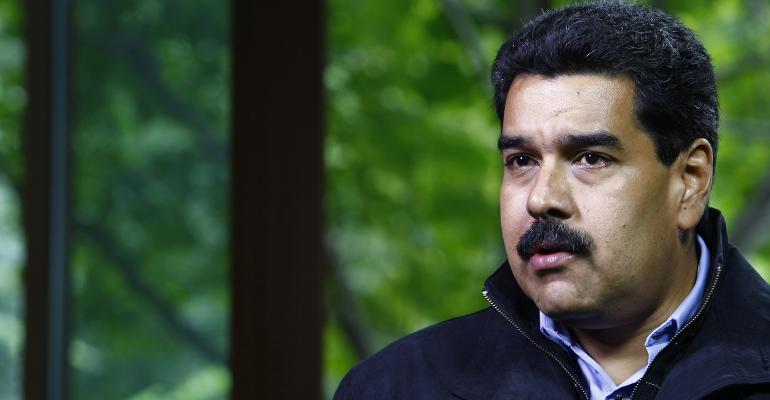By Eric Lam
(Bloomberg) --Venezuela’s 95 percent devaluation of the bolivar over the weekend is generating fresh interest in its cryptocurrency, which was designed to be devaluation-proof. Yet, months after the Petro was first offered to the public, President Nicolas Maduro has yet to remove some of the mystery surrounding the mechanics of the digital coin.
Here’s what we’ve been told about the Petro by Maduro in public comments and via information on a website set up by his government to market the coin, which Venezuela says will be linked to its new “sovereign” bolivar.
What is it?
The Petro will be a “sovereign cryptoasset backed and issued by the Venezuelan state” and associated with the country’s crude reserves, according to a January white paper issued by the Venezuelan government. Venezuela will issue 100 million Petros, based on the NEM blockchain, and the Venezuelan state “will not be able to make new emissions” of the Petro, according to the paper.
While the coin is supposed to be referenced to the previous day’s Venezuelan oil basket price, minus a variable discount, and be legal tender for paying taxes, fees, contributions and public services, its traded value is still not publicly reported.
The government values the Petro at 3,600 sovereign bolivars -- $60 under the new exchange rate -- and it will allow the cryptocurrency to fluctuate, Maduro said on state television Aug. 18.
Should consumers or investors trust the Petro?
Critics have questioned the token’s trustworthiness. Some ratings sites have called it a fraud. Initial coin offering ratings website ICOindex.com categorizes the Petro as a scam, saying there’s a lack of key technical information including how the cryptocurrency is actually backed by oil, as well as concerns the Venezuelan government won’t be able to manage complex blockchain technology.
While cryptocurrencies were originally designed to be decentralized and free from third-party and governmental control, the Petro is neither.
How do you buy it?
The Petro rollout is in two phases: a private “presale” of 38.4 million Petros and a public offer of 44 million, with rolling discounts meant to incentivize early buyers. Venezuela’s Superintendency of Cryptocurrency and Related Activities will hang on to the 17.6 percent remaining Petros, the paper said.
In an address in March, Maduro said Venezuela garnered some $5 billion in offers from 133 countries including Russia, China, Colombia, Spain, the U.S. and Mexico. President Donald Trump banned Americans from buying the Petro in March.
However after the month-long presale phase ended in March, Maduro said the state raised $3.3 billion, in a TV address in April. About $1 billion of the sales were to be deposited in the country’s central bank reserves and also used for foreign exchange auctions, Maduro said at the time.
Members of the public can buy Petro by registering and downloading a digital wallet from the Petro website, according to posted instructions. The public sale will continue until all of the available Petros are purchased, the white paper said. After that, consumers can buy Petros on the secondary market. The Petro website also says it has raised $735 million through the token, without specifying if that is related to the public sale.
The Venezuelan government will be the sole regulator of all crypto assets, with the Cryptocurrency Treasury in charge of overseeing everything from emission to trading, the government’s Official Gazette said in April.
Why did Maduro turn to cryptocurrencies?
He has said the Petro will have a “great impact” on how Venezuela accesses foreign currencies and obtains goods and services from around the world -- a reference to the nation’s dollar shortage as a result of sanctions imposed by the U.S.
Where can you use it?
Venezuela has approved the use of the Petro and “all other cryptocurrencies” as a form of payment in popular tourist destinations and along its western border, according to the government’s Official Gazette, dated March 22 and distributed in April. Areas include Margarita Island, Los Roques, as well as border cities Urena and San Antonio del Tachira. Yet major exchanges, such as Binance and Bitfinex, don’t quote a price for it.
One country that won’t be using the Petro to buy oil from Venezuela any time soon is India, as the Reserve Bank of India banned banks from touching digital currencies.
--With assistance from Camila Russo.To contact the reporter on this story: Eric Lam in Hong Kong at [email protected] To contact the editors responsible for this story: Christopher Anstey at [email protected] Todd White, Yakob Peterseil





